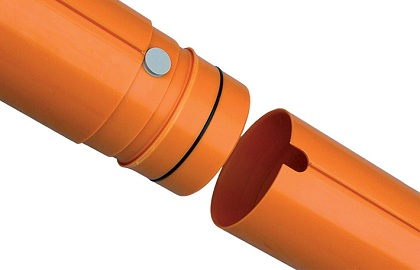Good to know
- Home
- Good to know

The measuring process is initiated by drilling an inclinometer casing (a slender plastic tube with keyways on the interior walls) down into the earth. The lower section of the casing is firmly anchored to a solid base, preferably rock. Since the tube is narrow, it will follow the earth’s movements, although it is extremely important to make sure that the tip of the tube is fixed in a flat position. With the aid of the inclinometer, the inclination of the tube is measured at different levels and by plotting the measured inclination at these levels the horizontal position (or geometry if you prefer) is obtained. By repeated measurements it is possible to record changes over time and to plot a deformation illustration. The measurements can be made both manually and automatically.
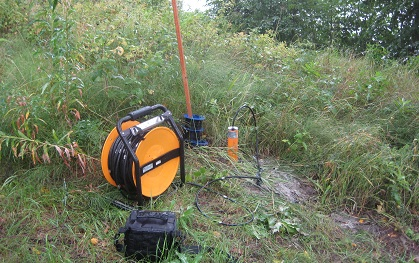
Is this really possible? Yes, it is, and it is no more complicated than if you cast-in a grooved inclinometer casing at the same time as you manufacture the piles. In this way, you can measure the straightness of the pile as well as its torsion. It is also possible to measure any deformations that have occurred in the piles after driving as a result, for example, of soil displacement from instability or nearby pile-driving.
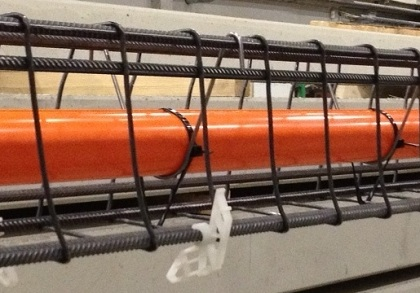
The equipment we use for the purpose of straightness measurement of casings and piles is Geometrik’s manual inclinometer INGVAR II and our newly designed straightness meter, the RT-1. The principal difference between the two instruments is that the manual inclinometer is oriented with rods whereas the RT-1 is oriented with a specially designed and constructed gyro. In other respects, the measurement principles are the same.
The instrument measures the inclination from the vertical in two directions with a 90 degree angle between each of them with the aid of two accelerometers (the RT-1 has another accelerometer for checking the signal for errors). In order to center the instrument, use is made of various types of carriages, the function of which is to ensure that the inclinometer, during measurement, is parallel to the centre line of the casing or pile.
During measurement, the inclination in the casing/pile is measured at each measuring depth. When measuring straightness, the radial deviation is then measured in the casing/pile at each measurement depth. During straightness measurement, the radial deviation is then measured from a conceived straight line from the top of the pile to its tip, after which the pitch and bending radius are calculated. The presentation is then made in graph form with information on the minimum bending radius for the bend length concerned.
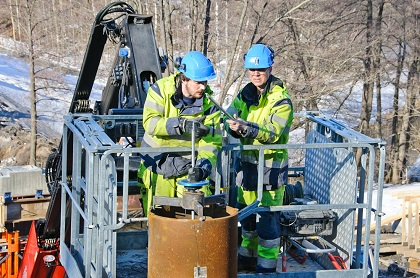
No problem. You simply use a steel pipe that is welded on to the piling, inside which an inclinometer tube is then installed. Sometimes, these steel pipes become available from other activities, such as jet grouting. In order to cast the inclinometer tube solidly inside the steel pipe, use should preferably be made of a mixture of only cement and water. By mounting the inclinometer tube on the sheet piling, information is also given on subsurface movements of the piling, which are otherwise difficult to measure.
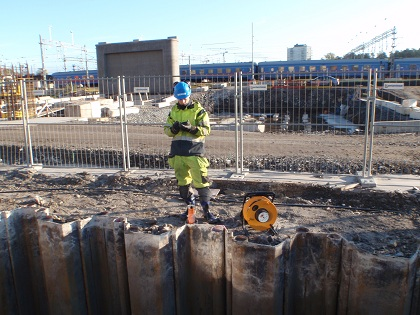
With manual inclinometer measurement, an instrument is inserted down into the inclinometer tube by an operator. Measurement is normally performed over every half metre and with most of the instruments available on the market you receive measurements in the x and y axes simultaneously. In the case of automatic inclinometer measurement, the inclinometer sensors are inserted and fixed in position on different levels. The accuracy of the measurements is greater the closer together the inclinometers are placed. Normally, the inclinometers are placed at 2 m centres. The inclinometers are connected to data loggers that automatically save the measurement values and then transmit them to a webpage.
Manual measurement in grooved tubes normally gives a high degree of accuracy because measurements are taken at so many points along the tube (every 0.5 m). The accuracy will be approximately +/- 2 mm on the ground surface in a 20 m deep tube. The disadvantage is that it is expensive, and in principle impossible, to measure at close intervals. If, for example, you want to measure every 15 min. in 10 inclinometer tubes on a section of sheet piling, automatic sensors are by far the best option. Measuring at close intervals does not entail any additional costs since the automatic sensors are already installed and the registration takes place fully automatically. The system with the automatic inclinometers can also transmit an alarm when the limit value has been reached.
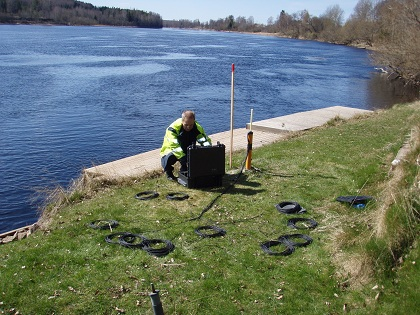
It is important for the tube to be installed in a good way. Very often, casing drilling is the best alternative for creating the space needed in the ground where the tube can be installed. When drilling to insert a casing in the ground, a steel casing is drilled down to solid base. After the casing has been emptied, the inclinometer tube is lowered down into the casing. In order to fix the inclinometer tube in the soil, the space between the inclinometer tube and the casing is filled with a mixture of cement and bentonite. Every effort should be made to ensure that the properties of the cement/bentonite mix are as far as possible the same as those of the surrounding soil. A recipe for this can be obtained from Geometrik. Once the mixture has been poured in, the casing is dismantled. It is very important that the casing is not twisted when dismantling since it could damage the inclinometer tube. You should also make sure that the inclinometer tube grooves are aligned in the intended measuring direction. See also SGF’s Report No 2:2006.
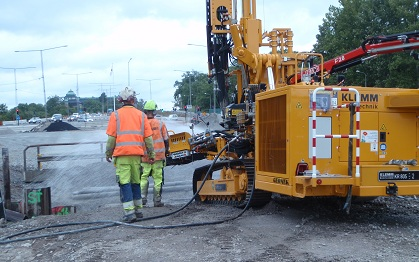
We firmly recommend the use of internally-grooved inclinometer tubes made of plastic. With these, the inclinometer wheels run in the internal grooves, thereby guaranteeing that the measurements are taken in the direction of the grooves. If you are uncertain as to whether the tube, and thus the grooves, has been displaced during installation, we can check this by means of torsion measurement in which we measure the direction of the grooves along the entire length of the tube.
